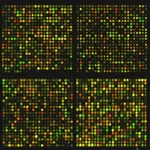
Bioinformatics Tools for Precision Oncology: A Comprehensive Guide to Genomic Biomarker Discovery
October 17, 2024 Off By adminThe rapid evolution of bioinformatics tools, driven by advancements in next-generation sequencing (NGS) technologies, has transformed cancer research. With an increasing focus on personalized medicine, bioinformatics plays a crucial role in genomic biomarker discovery, helping to identify genetic mutations, somatic variants, and oncogenic pathways. This essay explores the methodologies, tools, and future directions of bioinformatics applications in oncology, emphasizing its role in precision medicine.
The Role of Bioinformatics in Cancer Genomics
Bioinformatics integrates computational biology, statistical methods, and next-generation sequencing (NGS) technologies, such as whole-genome sequencing (WGS) and RNA sequencing (RNA-seq). These technologies are pivotal for understanding cancer genetics by identifying mutations, gene expression profiles, and biomarkers that drive tumorigenesis and predict therapeutic outcomes. NGS provides comprehensive data for large-scale analysis of genetic variations, copy number variations (CNVs), and differential gene expression, leading to significant improvements in cancer diagnosis, treatment, and prognosis.
Key tools in cancer genomics include:
- ANNOVAR: Predicts functional consequences of genetic variants.
- Ingenuity Pathway Analysis (IPA) and Gene Set Enrichment Analysis (GSEA): Offer insights into the pathways and networks affected by genetic changes.
- cBioPortal: Facilitates visualization and analysis of large cancer genomics datasets.
These tools offer insights into tumor biology, facilitating biomarker discovery and clinical decision-making.
NGS Technologies Driving Biomarker Discovery
The development of NGS platforms revolutionized cancer research, providing cost-effective and high-throughput sequencing options. Tools such as Illumina and PacBio systems have enabled researchers to conduct whole-genome and whole-exome sequencing (WES), identifying key genetic variants and structural alterations. RNA-seq, specifically, has become a preferred method for transcriptome analysis, uncovering gene expression patterns associated with different cancer types and stages.
Sequencing methods like:
- Whole Genome Sequencing (WGS): A comprehensive approach that examines the entire genome.
- Whole Exome Sequencing (WES): Focuses on coding regions that influence protein production.
- RNA-seq: Analyzes gene expression to identify dysregulated transcripts.
These methods allow for the identification of novel biomarkers, such as long non-coding RNAs (lncRNAs), which are pivotal in regulating cancer progression and serve as potential therapeutic targets.
Data Preprocessing and Quality Control
A critical step in bioinformatics workflows involves ensuring the quality of raw sequencing data. Tools such as FastQC assess sequencing quality, while tools like Trimmomatic and Cutadapt trim adapter sequences and low-quality reads. After quality control, data is aligned to a reference genome using tools such as STAR, HISAT2, or Bowtie, which facilitate accurate mapping of RNA-seq reads.
Effective data preprocessing and quality control are essential to ensure reliable results for downstream analyses, such as differential gene expression and alternative splicing, which contribute to biomarker discovery and personalized treatment plans.
Machine Learning for Biomarker Discovery
Machine learning (ML) has become a cornerstone in biomarker discovery, providing powerful tools for analyzing large, high-dimensional datasets. Algorithms, including supervised learning and deep learning models like TensorFlow and PyTorch, are employed to identify patterns in gene expression data. These models allow researchers to classify tumors based on molecular subtypes, predict therapeutic responses, and identify new biomarkers.
ML models are trained on labeled data to predict patient outcomes or response to therapy. The integration of multi-omics data with machine learning enhances the ability to predict disease progression and personalize treatment options for cancer patients.
Visualization and Data Integration Tools
Visualization tools are essential for interpreting complex genomic data. Bioinformatics tools like ggplot2 (R), Matplotlib (Python), and specialized platforms like Seurat and Giotto for spatial transcriptomics provide intuitive ways to explore and present findings. Integrating RNA-seq data with other omics datasets, such as proteomics and metabolomics, helps provide a more comprehensive understanding of cancer biology.
For example, combining single-cell RNA-seq data with bulk RNA-seq data can reveal novel biomarkers like lncRNAs, which play significant roles in cancer biology.
Challenges and Future Directions in Bioinformatics
Despite its tremendous potential, bioinformatics in cancer genomics faces challenges, such as data standardization, validation, and reproducibility. The sheer volume of multi-omics data poses significant computational and analytical hurdles, while ensuring the integration of diverse datasets remains a challenge. Moreover, the transition of bioinformatics discoveries into clinical practice requires rigorous validation, regulatory approval, and cost considerations.
Future advancements in bioinformatics will focus on:
- Single-cell and spatial omics: Offering deeper insights into tumor heterogeneity.
- AI and deep learning: Enhancing predictive algorithms for biomarker discovery.
- Data privacy and ethics: Addressing the ethical concerns of genomic data sharing and patient consent.
Conclusion
The integration of bioinformatics tools in cancer genomics is reshaping the landscape of precision oncology. By enabling the identification of genomic biomarkers and facilitating personalized treatment plans, bioinformatics is at the forefront of transforming cancer care. Future advancements in multi-omics integration, machine learning, and spatial omics will continue to drive innovation, bringing precision oncology closer to clinical practice and improving patient outcomes globally.
Table of Contents
ToggleRelated posts:
![choosing-college-major-US]()
Top Bioinformatics Colleges: Your Pathway to a Successful Career
bioinformatics![linuxbioinformatics]()
Installing Bioinformatics Software in Linux
bioinformatics![biophysics_bioinformatics]()
Exploring the Wonders of Biophysics: A Beginner's Guide with a Focus on Bioinformatics Applications
bioinformatics![microarray analysis]()
Mastering Microarray Data Analysis: A Step-by-Step R/Bioconductor Tutorial
bioinformatics![Bioinformatics Cheatsheet]()
Bioinformatics Cheat Sheet: A Step-by-Step Guide for Beginners
bioinformatics![Guide to XML for biologists]()
XML in Bioinformatics: A Comprehensive Guide for Biologists
bioinformatics![Microbial Dark Matter: Exploring the Vast Majority of Uncultivated Microbes in Various Environments]()
Microbial Dark Matter: Exploring the Vast Majority of Uncultivated Microbes in Various Environments
genomics![protein science]()
Protein Science in Bioinformatics: A Quick Guide to Sequence and Structure Analysis
bioinformatics![AI-computer]()
Essential Tips to Kickstart Your R Learning Journey
bioinformatics![Spatial Metabolomics]()
Metagenomics and Microbiome Analysis: Unraveling Microbial Communities with AI
A.I![Converting DNA to Protein Sequence]()
Converting DNA to Protein Sequence
bioinformatics![Global Genomics Initiatives]()
Proteogenomics: Integrating Proteomics with Genomics
genomics![Bioinformatic courses in Canada]()
Bioinformatic courses in Canada
bioinformatics![Bioinformatics]()
The Ultimate Guide to Bioinformatics Tools: How to Choose, Evaluate, and Optimize for Research Succe...
bioinformatics![ChatGPT for Coders]()
Role of artificial intelligence and machine learning in Bioinformatics
bioinformatics![bioinformatics-DNA, protein]()
Accessing Genotyping Data and GWAS Data for eQTL Studies
genomics


















